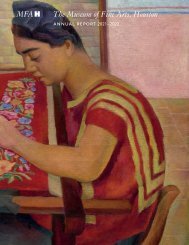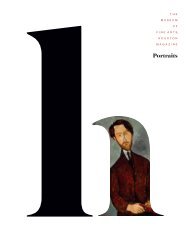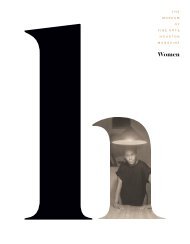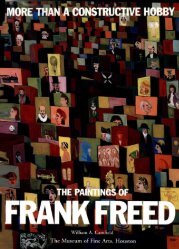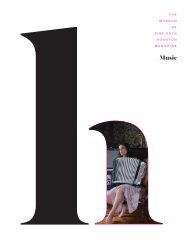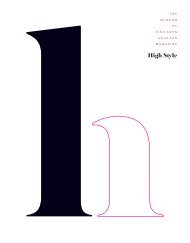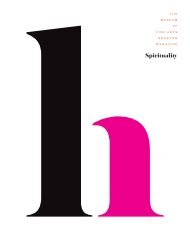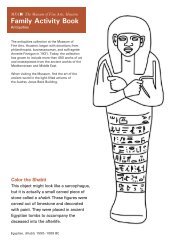You also want an ePaper? Increase the reach of your titles
YUMPU automatically turns print PDFs into web optimized ePapers that Google loves.
A C R O S S T H E C O L L E C T I O N S<br />
Go <strong>Figure</strong><br />
<strong>The</strong> Greek philosopher Aristotle believed “the aim of art is to represent not the outward appearance<br />
of things, but their inward significance.” For millennia, artists have aimed not only to capture the figure but<br />
to infuse its representation with deeper meaning and purpose—whether to embody lived experience, to<br />
uphold tradition, or to examine its magical quality. <strong>The</strong> works shown here—all drawn from the Museum’s<br />
collection—comprise a cross-cultural snapshot of artists’ ever-evolving approach to and stylistic<br />
treatment of the figure.<br />
P O R T F O L I O<br />
16<br />
20 × 15 1/4 × 17 3/4”<br />
460–450 BC<br />
This monumental krater, an ancient<br />
Greek vessel for diluting wine, depicts<br />
several figures in composite engaged<br />
in a dramatic battle scene. A rider on<br />
a rearing mount fends off two soldiers,<br />
called hoplites, who peer over their<br />
decorated shields. One of the foot<br />
soldiers, wearing a Thracian helmet<br />
and a star-studded tunic, attempts a<br />
strike with his spear. Kraters were an<br />
important part of symposia, all-male<br />
banquets that featured wine, food,<br />
games, and entertainment. Such<br />
combat scenes were inspired by<br />
<strong>The</strong> Iliad, the poet Homer’s great<br />
war epic from the 7th century BC.




